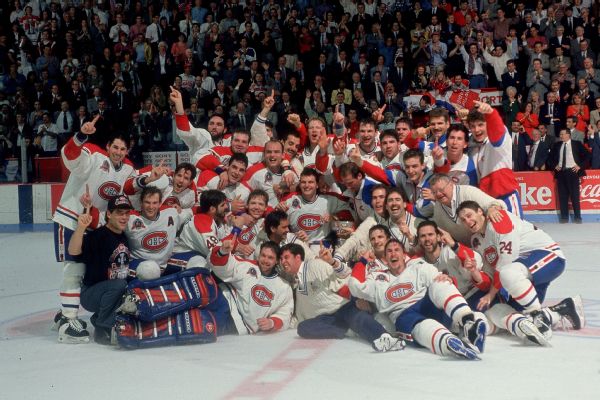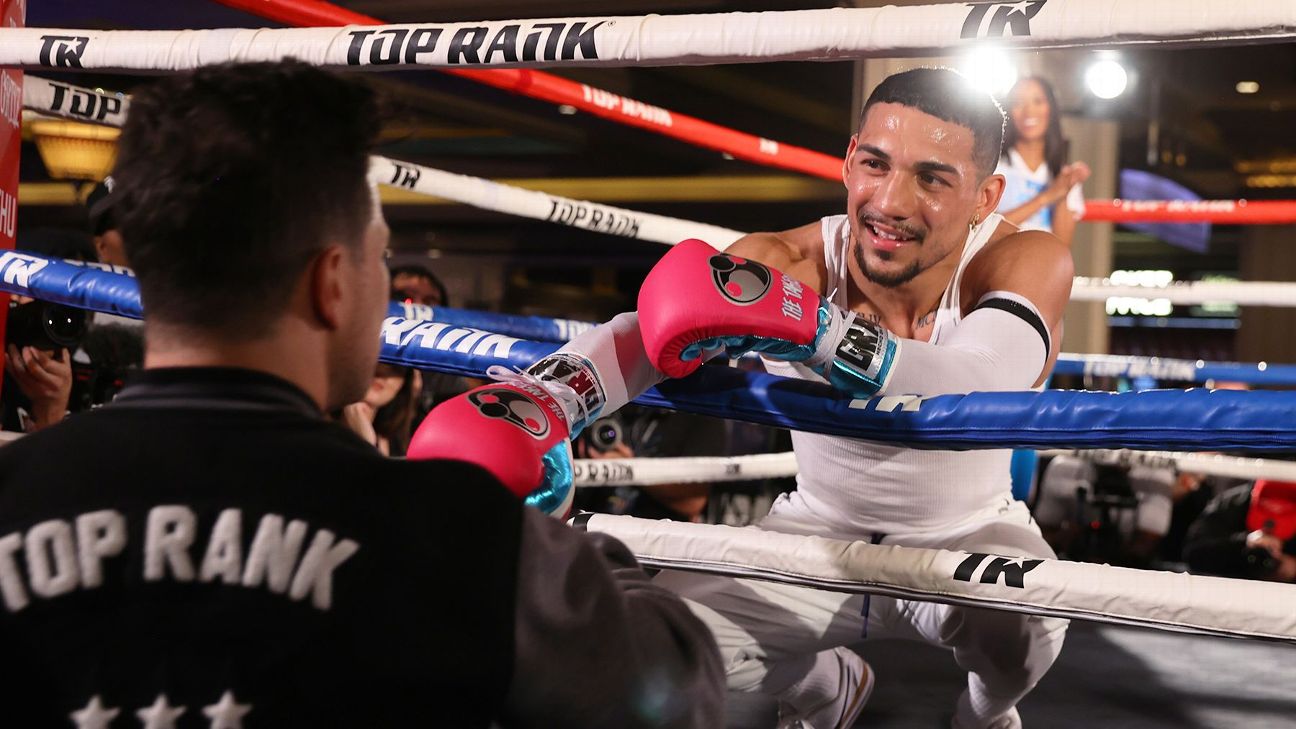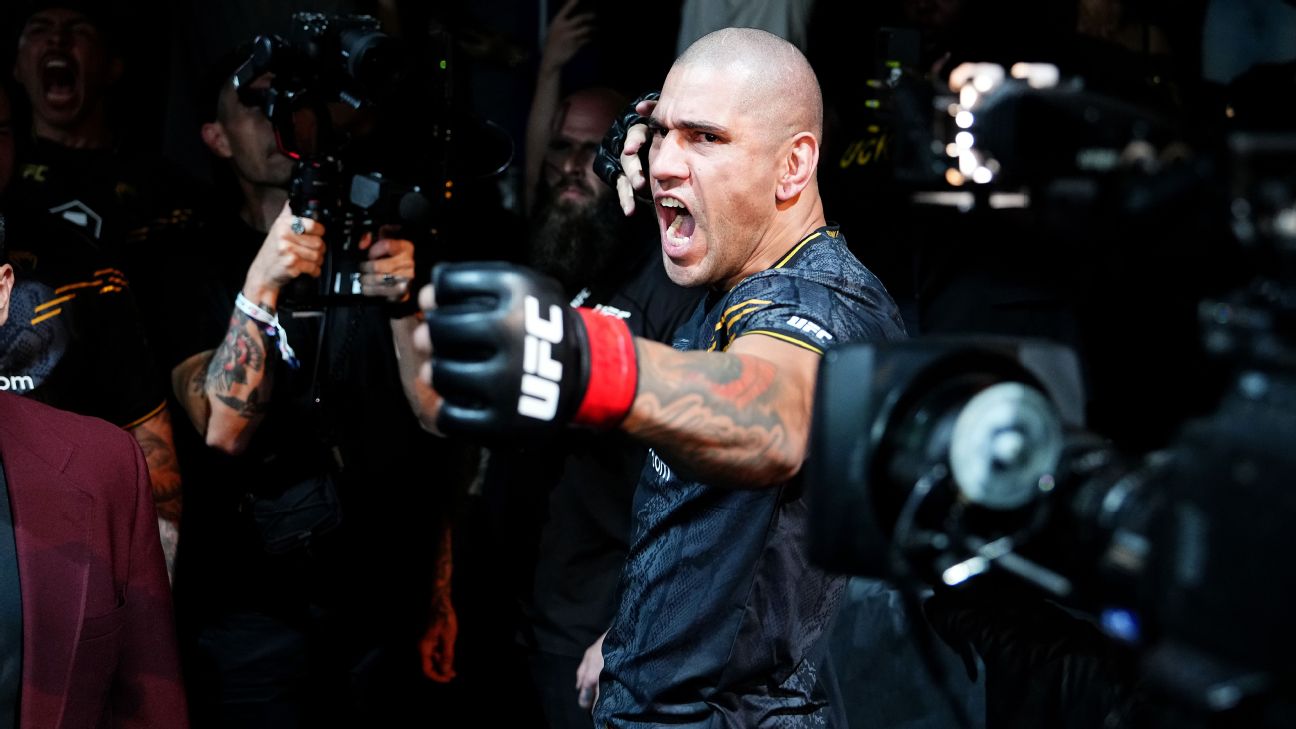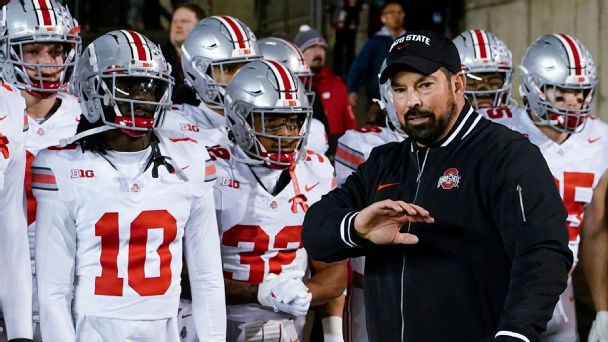![Andrew_Benintendi_BD [608x342]](https://a.espncdn.com/photo/2024/0618/r1347433_608x342_16-9.jpg)
Sources Knicks land Bridges as Nets pile up picks
Is losing curable? The past few seasons in MLB have certainly tested that hope for some teams and, by extension, the players on those teams. It's unavoidable, because bad teams invariably feature players having bad seasons.
The 2024 season might see a new rock bottom, as the Chicago White Sox currently own the third-worst winning percentage since World War II (.267), trailing only the 1962 New York Mets and 2003 Detroit Tigers.
The magic win numbers for the White Sox are 39 and 43. The latter number would allow the ChiSox to sidestep the all-time record-low .235 winning percentage of the 1916 Philadelphia Athletics, as a 39-123 mark would leave Chicago at .241. And of course the 43 wins would mean avoiding the all-time loss record of 120, held by those '62 Mets.
Those are low bars to clear and on the strength of plain, old statistical regression, the White Sox are a long shot to drop below either historical threshold. It's really hard to lose that many games. In my last run of simulations, the White Sox had a 2.7% shot at finishing with 38 or fewer wins and a 12.1% probability to match or exceed the '62 Mets. Uncomfortably high odds to be sure, but the chances are still quite long.
There is one wild card in this scenario that simulations can't yet account for: The White Sox roster we see now is not the one that's likely to see the field over the last two-plus months of the regular season. Chicago will probably attempt to acquire as much future value as it can and one clear way to do that is to trade players who might bring back that value. In the short term, that can mean getting even worse.
If there is one avatar for the White Sox's 2024 futility, it's probably outfielder Andrew Benintendi. This isn't really fair, and on a team this bad no one player deserves that particular designation. But it lands on Benintendi, because he has a chance at having the worst individual season in major league history.
Through Sunday, Benintendi was at minus-1.86 WAR, per the Baseball-Reference version of the number. That figure has actually been improving over his most recent games, which are sandwiched around an IL stint. Nevertheless, that total puts Benintendi on pace for minus-4.19 WAR for the season.
How bad is minus-4.19 WAR? Bad. Worst ever bad. In fact, it would be an ignominious figure that would surpass Atlanta Braves infielder Jerry Royster, who had a minus-4.05 WAR in 1977. That rates as the worst season among modern era position players.
Benintendi is on pace to do worse. What does that say about Benintendi? And, on a larger scale, what does history tell us about players having bad years on bad teams?
Just how bad has Benintendi been?There are two things about Benintendi's season that can be observed and, taken together, they are wholly counterintuitive.
First and most obvious is that Benintendi is having a remarkably poor campaign. His OPS through Sunday is just .541, which translates to an OPS+ of 54, or 46% worse than the league average. He's at minus-8 in defensive runs saved, the fielding metric that feeds Baseball-Reference's WAR, and he also rates below average in baserunning. On top of everything, as someone who usually plays left field, Benintendi has negative positional value.
But here's the second thing: Benintendi is a good player, or at least he was until recently. Paradoxically, that might be why he is actually a threat to challenge Royster if his season slump continues. That's because to compile this much bad production, you have to be pretty good. If you weren't, teams wouldn't keep running you out there.
When a good player goes bad, injuries are typically part of the story. Such is the case for Benintendi. He's had injuries to his upper body (wrist/hamate) and lower body (Achilles tendinitis, the reason for the recent IL stint). Still, in terms of actual WOBA against expected WOBA (per Statcast), only seven of 257 qualifying hitters have suffered a bigger shortfall. That suggests he's been an unlucky player for many reasons.
Assuming these extremes start to level out, Benintendi's numbers should regress toward his preseason projection (.311 WOBA, per FanGraphs), allowing him to escape Royster territory -- even if he keeps playing every day.
Still, there are no guarantees. Losing can become a habit. Sometimes, players fail to recover, especially if physical limitations are involved. And, depending on who is moved before the deadline, the White Sox might not have anybody better to put in left field even if Benintendi isn't traded. The negative WAR could keep piling up, as the player and team keep looking to tomorrow, when things will surely turn around. However, tomorrow might never come.
For solace and perspective, the White Sox and Benintendi (as well as any team looking to trade for him) need to keep in touch with the bigger picture. Benintendi doesn't turn 30 years old until July 6. Over the three seasons prior to this, he's had a 103 OPS+ with plus-6 defensive runs saved, while compiling 5.9 WAR. During that span, he's won a Gold Glove and played in an All-Star Game.
Is that player simply gone forever? Can he really vanish that quickly?
What does history tell us about good players going bad?Sometimes, players hit a wall in their careers and the end comes much sooner than they might have predicted. We don't know yet if that describes Benintendi, but it's possible.
Exacerbating Benintendi's plight is the team around him. What effect does playing on such a bad team have for a good player who's fallen into such a deep hole? Is it possible to escape such a void? What is the psychological impact of not just toiling for an unusually bad team, but actually being a clear reason for that team's lack of success? How much more difficult is it when, like Benintendi, you have enjoyed some success and, in terms of age, still should be at that level?
There's no component you can plug into a forecasting system for those factors, but we can consider some history-based comparisons.
To generate a list from which to work, I converted the WAR (including prorated 2024 totals) for every hitter in the modern era to my favored AXE format. That's 37,771 hitter seasons. For our purposes here, we're only including players from the American and National leagues.
All that really matters is the scale:
70: Three standard deviations below average 80: Two standard deviations below average 90: One standard deviation below average 100: Average 110: One standard deviation better than average 120: Two standard deviations better than average 130: Three standard deviations better than average 140: Four standard deviations better than average 150: Five standard deviations better than average 160: Six standard deviations better than average
Benintendi's prorated WAR (minus-4.19) translates to an AXE figure of 71.8. Meanwhile, the White Sox's AXE for a wins-per-162 pace of 42 is 71. Nice symmetry, but not a happy one to any fan on the South Side.
In this data set, there have been 3,647 hitter seasons with an AXE rating below 90. Of those, 1,148 were posted for teams that also had an AXE rating below 90. Of those, 827 were from players in their age-29 season or younger, like Benintendi. Since we want to look at subsequent three-year windows, we'll also eliminate the 36 qualifying seasons put up since 2022, leaving us with 791 players.
Next, we want to filter down to the players who had demonstrated at least some level of success prior to their catastrophe campaign, which we're defining as those seasons when the player and team crater together. Entering this season, Benintendi had accumulated 16.1 WAR for his career. That is good enough to make his inclusion in this club unlikely. Only two hitters had a higher pre-catastrophe career WAR total:
• Tommy Davis (catastrophe season of 1968), with 19.0 previous WAR
• Nate Colbert (1975), with 17.2 career WAR
We don't want a sample size of two, so let's lower the bar to a pre-catastrophe career WAR of 3, which seems small but we have to do that to get any kind of meaningful sample. We're left with 73 hitter seasons. Of those 73 accomplished hitters who ran aground, just 15 posted a total of at least three WAR over the three post-catastrophe seasons or, to put it another way, only 15 managed to average even one WAR per season thereafter, or 20.5%.
Just 57 of that group of 73 had any WAR total at all after they hit rock bottom. The catastrophe season was it for 16 of them, as far as playing in the majors was concerned. Move one season beyond that, and we're down to 44. And, finally, when we get two seasons removed from a catastrophe season, the number of formerly successful survivors drops to 32.
That's grim, but let's focus on our 15 survivors who did manage to average at least one WAR after rock bottom. That group of 15 bounce-backs does contain a few feel-good stories to which Benintendi can look for hope.
Among those is Ronnie Belliard, whose promising early career ran into trouble when he plummeted to minus-2.2 WAR in what turned out to be his final season for Milwaukee in 2002. He went on to put up 9.2 WAR over the next three seasons for the Colorado Rockies and Cleveland and made the All-Star Game in 2004. It can happen!
Other players who bounced back nicely after hitting a very deep rock bottom over the decades have included Jerry Priddy, Pete Runnels, Dave Kingman and, more recently, James McCann, who is still going after hitting his nadir way back in 2018 for the 64-98 Tigers. There's one more name to drop, but we'll save that.
The bottom line is that once a player on a terrible team drops this far, the odds against him climbing out of his hole are long. But it can happen and has happened. Still, with more than half the season to go, the more Benintendi can distance himself from this pace, the better his outlook.
Is there a way out?We don't know how things are going to play out for either Benintendi or the White Sox. What we do know is that if Benintendi were to end up with the worst WAR and the White Sox were to end up with 121 or more losses, these two things will be linked forever. A trade, and a fresh start, will be almost merciful for Benintendi. Unfortunately, of all the obvious trade candidates on Chicago's roster, his market might be the most limited because of his contract, which has him on the books for three more guaranteed seasons beyond 2024 for $49.3 million. Chicago would likely have to eat most of that money to move Benintendi, much less to get some future value in return.
If Chicago isn't able to find a taker for him by the end of July, there is little reason to sit Benintendi or release him, as the money is a sunk cost either way. You might as well keep him to see if he can bounce back in 2025, even if only to rebuild some trade value next summer.
If Benintendi were blocking prospects itching for an audition, that would change things, but that's not really the case. The parameters could change depending on how the in-season trade market goes, but for now, none of Chicago's top outfield prospects are close to the majors. This all means that the dual quests of Benintendi and his team to avoid all-time infamy might be impossibly intertwined.
Strangely enough, this brings us back to Royster for some consolation.
Royster didn't know he had achieved all-time worst status in WAR when it happened because we were decades from that framework coming into being, much less becoming as widely used as it is now. There was also no social media to scream these things, so all Royster knew is he was having a bad year (46 OPS+, minus-25 runs on defense). It was only Royster's second season for Atlanta after he was acquired from the Dodgers in the deal that sent Dusty Baker to L.A.
But Royster didn't fade away after that 1977 egg laying. He was an everyday regular for two more seasons and lasted another 11 campaigns in the majors. He had his best Braves year in a utility role in 1982, posting 1.5 WAR for that season's NL West champions. He posted 2.2 WAR for the San Diego Padres in his age-32 season (1985).
No, it's not Cooperstown stuff but the moral of the story is hitting bottom does not have to be the end. Benintendi has been a better player than Royster and the vast majority of those who suffered through catastrophe seasons. He might yet return to being that player once this long summer finally ends.
For now though, the disease of losing is running amok in Chicago and poor Andrew Benintendi is running out of time to find the cure.













